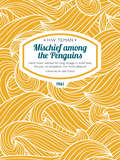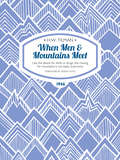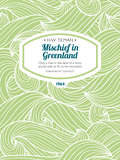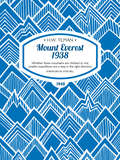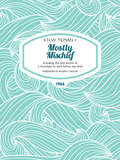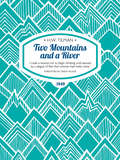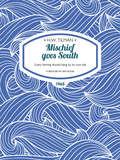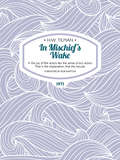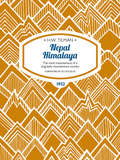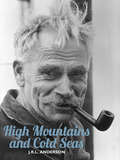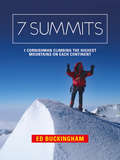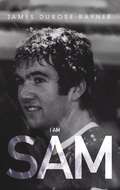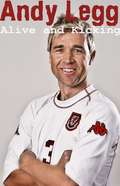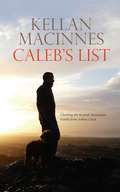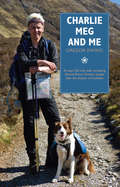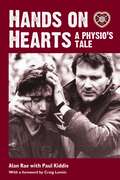- Table View
- List View
The Ascent of Nanda Devi: I believe we so far forgot ourselves as to shake hands on it (H.W. Tilman: The Collected Edition #2)
by H.W. TilmanIn 1934, after fifty years of trying, mountaineers finally gained access to the Nanda Devi Sanctuary in the Garhwal Himalaya.Two years later an expedition led by H.W. Tilman reached the summit of Nanda Devi. At over 25,000 feet, it was the highest mountain to be climbed until 1950.The Ascent of Nanda Devi, Tilman’s account of the climb, has been widely hailed as a classic. Keenly observed, well informed and at times hilariously funny, it is as close to a ‘conventional’ mountaineering account as Tilman could manage. Beginning with the history of the mountain (‘there was none’) and the expedition’s arrival in India, Tilman recounts the build-up and approach to the climb.Writing in his characteristic dry style, he tells how Sherpas are hired, provisions are gathered (including ‘a mouth-blistering sauce containing 100 per cent chillies’) and the climbers head into the hills, towards Nanda Devi. Superbly parodied in The Ascent of Rum Doodle by W.E. Bowman, The Ascent of Nanda Devi was among the earliest accounts of a climbing expedition to be published. Much imitated but rarely matched, it remains one of the best.
Mischief among the Penguins: Hand (man) wanted for long voyage in small boat. No pay, no prospects, not much pleasure. (H.W. Tilman: The Collected Edition)
by H.W. Tilman‘Hand (man) wanted for long voyage in small boat. No pay, no prospects, not much pleasure.’So read the crew notice placed in the personal column of The Times by H.W. ‘Bill’ Tilman in the spring of 1959. This approach to selecting volunteers for a year-long voyage of 20,000 miles brought mixed seafaring experience: ‘Osborne had crossed the Atlantic fifty-one times in the Queen Mary, playing double bass in the ship’s orchestra’.With unclimbed ice-capped peaks and anchorages that could at best be described as challenging, the Southern Ocean island groups of Crozet and Kerguelen provided obvious destinations for Tilman and his fifty-year-old wooden pilot cutter Mischief. His previous attempt to land in the Crozet Islands had been abandoned when their only means of landing was carried away by a severe storm in the Southern Ocean.Back at Lymington, a survey of the ship uncovered serious Teredo worm damage. Tilman, undeterred, sold his car to fund the rebuilding work and began planning his third sailing expedition to the southern hemisphere.Mischief among the Penguins (1961), Tilman’s account of landfalls on these tiny remote volcanic islands, bears testament to the development of his ocean navigation skills and seamanship. The accounts of the island anchorages, their snow-covered heights, geology and in particular the flora and fauna pay tribute to the varied interests and ingenuity of Mischief’s crew, not least after several months at sea when food supplies needed to be eked out. Tilman’s writing style, rich with informative and entertaining quotations, highlights the lessons learned with typical self-deprecating humour, while playing down the immensity of his achievements.
When Men & Mountains Meet: Like the desire for drink or drugs, the craving for mountains is not easily overcome (H.W. Tilman: The Collected Edition)
by H.W. Tilman‘We had climbed a mountain and crossed a pass; been wet, cold, hungry, frightened, and withal happy. One more Himalayan season was over. It was time to begin thinking of the next. “Strenuousness is the immortal path, sloth is the way of death.”’First published in 1946, the scope of H.W. ‘Bill’ Tilman’s When Men and Mountains Meet is broad, covering his disastrous expedition to the Assam Himalaya, a small exploratory trip into Sikkim, and then his wartime heroics.In the thirties, Assam was largely unknown and unexplored. It proved a challenging environment for Tilman’s party, the jungle leaving the men mosquito-bitten and suffering with tropical diseases, and thwarting their mountaineering success. Sikkim proved altogether more successful. Tilman, who is once again happy and healthy, enjoys some exploratory ice climbing and discovers Abominable Snowman tracks, particularly remarkable as the creature appeared to be wearing boots—‘there is no reason why he should not have picked up a discarded pair at the German Base Camp and put them to their obvious use'.And then, in 1939, war breaks out. With good humour and characteristic understatement we hear about Tilman’s remarkable Second World War. After digging gun pits on the Belgian border and in Iraq, he was dropped by parachute behind enemy lines to fight alongside Albanian and Italian partisans. Tilman was awarded the Distinguished Service Order for his efforts—and the keys to the city of Belluno, which he helped save from occupation and destruction.Tilman’s comments on the German approach to Himalayan climbing could equally be applied to his guerrilla warfare ethos. ‘They spent a lot of time and money and lost a lot of climbers and porters, through bad luck and more often through bad judgement.’ While elsewhere the war machine rumbled on, Tilman’s war was fast, exciting, lightweight and foolhardy—and makes for gripping reading.
Mischief in Greenland: Only a man in the devil of a hurry would wish to fly to his mountains (H.W. Tilman: The Collected Edition)
by H.W. Tilman‘Only a man in the devil of a hurry would wish to fly to his mountains, forgoing the lingering pleasure and mounting excitement of a slow, arduous approach under his own exertions.’H.W. ‘Bill’ Tilman’s mountain travel philosophy, rooted in Africa and the Himalaya and further developed in his early sailing adventures in the southern hemisphere, was honed to perfection with his discovery of Greenland as the perfect sailing destination. His Arctic voyages in the pilot cutter Mischief proved no less challenging than his earlier southern voyages. The shorter elapsed time made it rather easier to find a crew but the absence of warm tropical passages meant that similar levels of hardship were simply compressed into a shorter timescale.First published fifty years before political correctness became an accepted rule, Mischief in Greenland is a treasure trove of Tilman’s observational wit. In this account of his first two West Greenland voyages, he pulls no punches with regard to the occasional failings, leaving the reader to seek out and discover the numerous achievements of these voyages. The highlight of the second voyage was the identification, surveying and successful first ascent of Mount Raleigh, first observed on the eastern coast of Baffin Island by the Elizabethan explorer John Davis in 1585. For the many sailors and climbers who have since followed his lead and ventured north into those waters, Tilman provides much practical advice, whether from his own observations or those of Davis and the inimitable Captain Lecky. Tilman’s typical gift of understatement belies his position as one of the greatest explorers and adventurers of the twentieth century.
Mount Everest 1938: Whether these mountains are climbed or not, smaller expeditions are a step in the right direction (H.W. Tilman: The Collected Edition)
by H.W. Tilman‘Whether these mountains are climbed or not, smaller expeditions are a step in the right direction.’It’s 1938, the British have thrown everything they’ve got at Everest but they’ve still not reached the summit. War in Europe seems inevitable; the Empire is shrinking. Still reeling from failure in 1936, the British are granted one more permit by the Tibetans, one more chance to climb the mountain. Only limited resources are available, so can a small team be assembled and succeed where larger teams have failed?H.W. Tilman is the obvious choice to lead a select team made up of some of the greatest British mountaineers history has ever known, including Eric Shipton, Frank Smythe and Noel Odell. Indeed, Tilman favours this lightweight approach. He carries oxygen but doesn’t trust it or think it ethical to use it himself, and refuses to take luxuries on the expedition, although he does regret leaving a case of champagne behind for most of his time on the mountain.On the mountain, the team is cold, the weather very wintery. It is with amazing fortitude that they establish a camp six at all, thanks in part to a Sherpa going by the family name of Tensing. Tilman carries to the high camp, but exhausted he retreats, leaving Smythe and Shipton to settle in for the night. He records in his diary, ‘Frank and Eric going well—think they may do it.’ But the monsoon is fast approaching …In Mount Everest 1938, first published in 1948, Tilman writes that it is difficult to give the layman much idea of the actual difficulties of the last 2,000 feet of Everest. He returns to the high camp and, in exceptional style, they try for the ridge, the route to the summit and those immense difficulties of the few remaining feet.
Mostly Mischief: Including the first ascent of a mountain to start below sea level (H.W. Tilman: The Collected Edition)
by H.W. Tilman'However many times it has been done, the act of casting off the warps and letting go one’s last hold of the shore at the start of a voyage has about it something solemn and irrevocable, like marriage, for better or for worse.’Mostly Mischief’s ordinary title belies four more extraordinary voyages made by H.W. ‘Bill’ Tilman covering almost 25,000 miles in both Arctic and Antarctic waters.The first sees the pilot cutter Mischief retracing the steps of Elizabethan explorer John Davis to the eastern entrance to the Northwest Passage. Tilman and a companion land on the north coast and make the hazardous crossing of Bylot Island while the remainder of the crew make the eventful passage to the southern shore to recover the climbing party. Back in England, Tilman refuses to accept the condemnation of Mischief’s surveyor, undertaking costly repairs before heading back to sea for a first encounter with the East Greenland ice.Between June 1964 and September 1965, Tilman is at sea almost without a break. Two eventful voyages to East Greenland in Mischief provide the entertaining bookends to his account of the five-month voyage in the Southern Ocean as skipper of the schooner Patanela. Tilman had been hand-picked by the expedition leader as the navigator best able to land a team of Australian and New Zealand climbers and scientists on Heard Island, a tiny volcanic speck in the Furious Fifties devoid of safe anchorages and capped by an unclimbed glaciated peak. In a separate account of this successful voyage, Colin Putt describes the expedition as unique—the first ascent of a mountain to start below sea level.
Two Mountains and a River: I made a resolve not to begin climbing until assured by a plague of flies that summer had really come (H.W. Tilman: The Collected Edition)
by H.W. TilmanH.W. Tilman’s Two Mountains and a River picks up where Mount Everest 1938 left off. In this instalment of adventures, Tilman and two Swiss mountaineers set off for the Gilgit region of the Himalaya with the formidable objective of an attempt on the giant Rakaposhi (25,550 feet). However, this project was not to be fulfilled.Not one to be dispirited, Tilman and his various accomplices—including pioneering mountaineer and regular partner Eric Shipton—continue to trek and climb in locations across China, Pakistan, Afghanistan and other areas of Asia, including the Kukuay Glacier, Muztagh Ata, the source of the Oxus river, and Ishkashim, where the author was arrested on suspicion of being a spy …Two Mountains and a River brims with the definitive Tilman qualities— detailed observations and ever-present humour—that convey a strong appreciation of the adventures and mishaps he experiences along the way. With a new foreword from prominent trekker, climber and lecturer, Gerda Pauler, this classic mountaineering text maintains Tilman’s name as a unique and inquisitive explorer and raconteur.
Mischief goes South: Every herring should hang by its own tail (H.W. Tilman: The Collected Edition)
by H.W. Tilman‘No sea voyage can be dull for a man who has an eye for the ever-changing sea and sky, the waves, the wind and the way of a ship upon the water.’So observes H.W. ‘Bill’ Tilman in this account of two lengthy voyages in which dull intervals were few and far between.In 1966, after a succession of eventful and successful voyages in the high latitudes of the Arctic, Tilman and his pilot cutter Mischief head south again, this time with the Antarctic Peninsula, Smith Island and the unclimbed Mount Foster in their sights. Mischief goes South is an account of a voyage marred by tragedy and dogged by crew trouble from the start. Tilman gives ample insight into the difficulties associated with his selection of shipmates and his supervision of a crew, as he wryly notes, ‘to have four misfits in a crew of five is too many’.The second part of this volume contains the author’s account of a gruelling voyage south, an account left unwritten for ten years for lack of time and energy. Originally intended as an expedition to the remote Crozet Islands in the southern Indian Ocean, this 1957 voyage evolved into a circumnavigation of Africa, the unplanned consequence of a momentary lapse in attention by an inexperienced helmsman.The two voyages described in Mischief goes South covered 43,000 miles over twenty-five months spent at sea and, while neither was deemed successful, published together they give a fine insight into Tilman’s character.
China to Chitral: Mountains are the beginning and end of all scenery (H.W. Tilman: The Collected Edition)
by H.W. TilmanIn China to Chitral H.W. ‘Bill’ Tilman completes one of his great post-war journeys. He travels from Central China, crossing Sinkiang, the Gobi and Takla Makan Deserts, before escaping to a crumbling British Empire with a crossing of the Karakoram to the new nation of Pakistan.In 1951 there still persisted a legend that a vast mountain, higher than Everest, was to be found in the region, a good enough reason it seems for Tilman to traverse the land, ‘a land shut in on three sides by vast snow ranges whose glacial streams nourish the oases and upon whose slopes the yaks and camels graze side by side; where in their felt yorts the Kirghiz and Kazak live much as they did in the days of Genghis Khan, except now they no longer take a hand in the devastation of Europe’.Widely regarded as some of Tilman’s finest travel writing, China to Chitral is full of understatement and laconic humour, with descriptions of disastrous attempts on unclimbed mountains with Shipton, including Bogdo Ola—an extension of the mighty Tien Shan mountains—and the Chakar Aghil group near Kashgar on the old silk road. His command of the Chinese language—five words, all referring to food—proves less than helpful in his quest to find a decent meal: ‘fortunately, in China there are no ridiculous hygienic regulations on the sale of food’. Tilman also has several unnerving encounters with less-than-friendly tribesmen …Tilman starts proper in Lanchow where he describes with some regret that he is less a traveller and more a passenger on this great traverse of the central basin and rim of mountain ranges at Asia’s heart. But Tilman is one of our greatest ever travel writers, and we become a passenger to his adventurers.
In Mischief's Wake: In the joy of the actors lies the sense of any action. That is the explanation, that the excuse. (H.W. Tilman: The Collected Edition)
by H.W. Tilman‘I felt like one who had first betrayed and then deserted a stricken friend; a friend with whom for the past fourteen years I had spent more time at sea than on land, and who, when not at sea, had seldom been out of my thoughts.’The first of the three voyages described in In Mischief’s Wake gives H.W. ‘Bill’ Tilman’s account of the final voyage and loss of Mischief, the Bristol Channel pilot cutter in which he had sailed over 100,000 miles to high latitudes in both Arctic and Antarctic waters.Back home, refusing to accept defeat and going against the advice of his surveyor, he takes ownership of Sea Breeze, built in 1899; ‘a bit long in the tooth, but no more so, in fact a year less, than her prospective owner’. After extensive remedial work, his first attempt at departure had to be cut short when the crew ‘enjoyed a view of the Isle of Wight between two of the waterline planks’. After yet more expense, Sea Breeze made landfall in Iceland before heading north toward the East Greenland coast in good shape and well stocked with supplies. A mere forty miles from the entrance to Scoresby Sound, Tilman’s long-sought-after objective, ‘a polite mutiny’ forced him to abandon the voyage and head home.The following year, with a crew game for all challenges, a series of adventures on the west coast of Greenland gave Tilman a voyage he considered ‘certainly the happiest’, in a boat which was proving to be a worthy successor to his beloved Mischief.
Nepal Himalaya: The most mountainous of a singularly mountainous country. (H.W. Tilman: The Collected Edition)
by H.W. TilmanThroughout 1949 and 1950 H.W. ‘Bill’ Tilman mounted pioneering expeditions to Nepal and its Himalayan mountains, taking advantage of some of the first access to the country for Western travellers in the 20th century. Tilman and his party—including a certain Tenzing Norgay—trekked into the Kathmandu Valley and on to the Langtang region, where the highs and lows began.They first explored the Ganesh Himal, before moving on to the Jugal Himal and the following season embarking on an ambitious trip to Annapurna and Everest. Manaslu was their first objective, but left to ‘better men’, and Annapurna IV very nearly climbed instead but for bad weather which dogged the whole expedition. Needless to say, Tilman was leading some very lightweight expeditions into some seriously heavyweight mountains.After the Annapurna adventure Tilman headed to Everest with—among others—Dr Charles Houston. Approaching from the delights of Namche Bazaar, the party made progress up the flanks of Pumori to gaze as best they could into the Western Cwm, and at the South Col and South-East Ridge approach to the summit of Everest. His observations were both optimistic and pessimistic: ‘One cannot write off the south side as impossible until the approach from the head of the West Cwm to this remarkably airy col has been seen.’ But then of the West Cwm: ‘A trench overhung by these two tremendous walls might easily become a grave for any party which pitched its camp there.’Nepal Himalaya presents Tilman’s favourite sketches, encounters with endless yetis, trouble with the porters, his obsessive relationship with alcohol and issues with the food. And so Tilman departs Nepal for the last time proper with these retiring words: ‘If a man feels he is failing to achieve this stern standard he should perhaps withdraw from a field of such high endeavour as the Himalaya.’
Ice with Everything: In climbing mountains or sailing the seas one often has to settle for less than one hoped. (H.W. Tilman: The Collected Edition)
by H.W. Tilman‘For most men, as Epicurus has remarked, rest is stagnation and activity madness. Mad or not, the activity that I have been pursuing for the last twenty years takes the form of voyages to remote, mountainous regions.’H.W. ‘Bill’ Tilman’s fourteenth book describes three more of those voyages, ‘the first comparatively humdrum, the second totally disastrous, and the third exceedingly troublesome’.The first voyage describes Tilman’s 1971 attempt to reach East Greenland’s remote and ice-bound Scoresby Sound. The largest fjord system in the world was named after the father of Whitby whaling captain, William Scoresby, who first charted the coastline in 1822. Scoresby’s two-volume Account of the Arctic Regions provided much of the historical inspiration for Tilman’s northern voyages and fuelled his fascination with Scoresby Sound and the unclimbed mountains at its head.Tilman’s first attempt to reach the fjord had already cost him his first boat, Mischief, in 1968. The following year, a ‘polite mutiny’ aboard Sea Breeze had forced him to turn back within sight of the entrance, so with a good crew aboard in 1971, it was particularly frustrating for Tilman to find the fjord blocked once more, this time by impenetrable sea ice at the entrance.Refusing to give up, Tilman’s obsession with Scoresby Sound continued in 1972 when a series of unfortunate events led to the loss of Sea Breeze, crushed between a rock and an ice floe.Safely back home in Wales, the inevitable search for a new boat began. ‘One cannot buy a biggish boat as if buying a piece of soap. The act is almost as irrevocable as marriage and should be given as much thought.’ The 1902 pilot cutter Baroque, was acquired and after not inconsiderable expense, proved equal to the challenge. Tilman’s first troublesome voyage aboard her to West Greenland in 1973 completes this collection.
High Mountains and Cold Seas: The life of H.W. ‘Bill’ Tilman: soldier, mountaineer, navigator (H.W. Tilman: The Collected Edition)
by J.R.L. AndersonHarold William ‘Bill’ Tilman (1898 –1977) was among the greatest adventurers of his time, a pioneering mountaineer and sailor who held exploration above all else.The son of a Liverpool sugar importer, Tilman joined the army at seventeen and was twice awarded the Military Cross for bravery during WWI. After the war Tilman left for Africa, establishing himself as a coffee grower. He met Eric Shipton and they began their famed mountaineering partnership, traversing Mount Kenya and climbing Kilimanjaro. Turning to the Himalaya, Tilman went on two Mount Everest expeditions, reaching 27,000 feet without oxygen in 1938. In 1936 he made the first ascent of Nanda Devi, the highest mountain climbed until 1950. He was the first European to climb in the remote Assam Himalaya, delved into Afghanistan’s Wakhan Corridor and explored extensively in Nepal, all the while developing a mountaineering style characterised by its simplicity and emphasis on exploration. It was perhaps logical that Tilman would eventually buy the pilot cutter Mischief, not with the intention of retiring from travelling, but to access remote mountains. For twenty-two years he sailed Mischief and her successors in search of them—to Patagonia, where he made the first easterly crossing of the ice cap, to Baffin Island to make the first ascent of Mount Raleigh, to Greenland, Spitsbergen, and islands in the far Southern Ocean, before disappearing in the South Atlantic in 1977.J.R.L. Anderson’s High Mountains and Cold Seas draws on a wealth of personal correspondence between Tilman—a compulsive letter writer—and his immediate family and close friends, crafting the first detailed account of the extraordinary life of this remarkable, but very private individual.
Bells & Bikes: On the Tour de France big ring for Yorkshire and its churches
by Rod IsmayRod Ismay has a passion (some would say obsession) for the Tour de France. If you think you know someone who is obsessed, think again, but fortunately Rod’s issues found their natural home when his native Yorkshire became the host for the 2014 Grand Départ. Rod also has another passion - as well as cycling he is quite keen on bell-ringing, so why not combine the two? Why not get all the bells ringing along the Tour route, why not organise countless events, countless meetings, why not drag in churches far and wide, why not involve your employer, your friends, your family, why not photo-bomb five-time Tour winner Bernard Hinault? Rod threw himself, his King of the Mountains jersey and his endless enthusiasm head first into making this Grand Départ about as good and memorable as it could be. Rod has written with passion about Yorkshire, its people, those two stages of the world’s greatest cycle race and the churches, ringing their bells all along the race route. If you like cycling then you will love this book. If you know Yorkshire then you will read this book with pride. If you are thinking of marrying a Tour de France obsessive then you need to read this book first.
7 Summits: 1 Cornishman climbing the highest mountains on each continent
by Ed BuckinghamMost of us can watch an old episode of the holiday programme Wish You Were Here without it having the life-changing effect that it had on postman Edward Buckingham. For Ed, a young man from humble origins in Cornwall, the draw of Kilimanjaro and the high mountains of the world would change his life forever. It would also very nearly end his life during a fall from high on Cho Oyu, the sixth highest mountain in the world. Drawn to high places, Ed embarked on a journey that would take him to the summit of the highest mountain on every continent. His seven summits actually involved ten summits - he climbed the highest summit in Western Europe, Mont Blanc, and the highest in Continental Europe, Mount Elbrus, as well as summiting Australia’s Mount Kosciusko and the far more remote Papua New Guinea summit of Carstenz Pyramid, the highest point in Australasia. And, of course, Cho Oyu. In 7 Summits, Ed tells of hardship and near-death experiences on Cho Oyu, the sheer scale and suffering in being the first Cornishman to ascend Everest, as well as his final summit, Mount Vinson in Antarctica. Ed develops as a man throughout his quest. Always humble, working hard for the Royal Mail delivering post to fund his trips, on his early trip to Aconcagua and on his first attempt on Mont Blanc he is very much a novice mountaineer, but his passion for the outdoors and willingness to help his fellow climbers is always there. During his fifteen-year quest Ed’s experience grows, particularly in the sub-Arctic of Alaska, where his ascent of Denali tested his stamina and equipment to the limit. At the culmination of his quest, he emerges as a capable climber, fit and strong and by sheer determination has become a world-class athlete, running full and ultra marathons, climbing mountains and delivering post.
I Am Sam
by James Durose-RaynerHigh-flying sports-media mogul and David Beckham doppelgänger, Mr. Arsenal is living every football fan's dream: he's loaded, has his pick of the ladies and drives a flashy sports car. And to make his life even sweeter, he's been chosen to work on coverage for the 2014 World Cup. Tasked with producing a short documentary, Mr. Arsenal, stumbles upon footage from Mexico 1970 and a high-profile spat between television pundit and Manchester City coach Malcolm Allison and Tottenham Hotspur player and captain Alan Mullery. On further investigation, he unearths a reference to a half-forgotten player named only as 'Sammy' and referred to as the one who was 'left behind'. Determined to discover the man behind the name, Mr. Arsenal quickly becomes obsessed with the tragic story of this once top-flight footballer whose brilliance has been all but lost in the annals of sporting history; a player who was once one of the highest paid and most successful players in Britain: Jon Sammels. As Mr Arsenal revisits Sammels' professional heyday in the late 1960s and early 70s, the impact on his own life is extraordinary.
Life's New Hurdles (Quick Reads)
by Colin JacksonColin Jackson is one of the greatest athletes that Britain has ever produced. He was in the world top ten for 16 years, and was world number 1 for two of them. He set seven European and Commonwealth and nine UK records, and he still holds the world record for indoor hurdling.In 2003 Colin retired from athletics in front of an adoring home crowd. Then real life began. In Life’s New Hurdles Colin describes the shock of adjusting to sudden change. How would he manage without the strict routine of training and competing that had been his life since the age of 17? Would he forever long to be back on the track? And how satisfying would his new career be as a sports presenter and television personality? From athletics commentating to Strictly Come Dancing, Colin describes the challenges and joys of starting a whole new life.
Alive and Kicking (Quick Reads)
by Andy LeggIn 2005 Welsh soccer star Andy Legg's life was turned upside down. Forced to retire after finding out that a lump in his neck was cancer, it seemed that his 15-year career, which included playing for Cardiff and Swansea City, was over. But an operation to remove the tumour was successful and the 42-year-old Neath-born star is now back on the field. "Alive and Kicking" is his emotional account of his fears for his career and his life, and his gratitude for the support of his fans which give him the strength to fight on.About the AuthorAndy Legg is a Welsh international footballer and one of a select band to play for South Wales arch rivals Swansea City and Cardiff City.Signed by Swansea City in 1988, he turned professional at the age of 22. An aggressive left sided player, Andy made more than 160 League appearances for the Swans, before moving on to Notts County, Birmingham City, Ipswich and Reading. He joined Cardiff City in 1998. His League career totalled more than 600 appearances; he played six times for Wales and made the Guinness Book of Records for his long throw-in. He's coached at Peterborough, managed Hucknall Town and continues to play for Welsh Premier League side Llanelli.
The Picnic Cookbook: Outdoor Feasts For Every Occasion (National Trust Food Ser.)
by Laura MasonPicnics and outdoor meals are a classic theme in British food. Afternoon tea in the garden on a golden afternoon in late summer, a packed lunch consumed on a hilltop while the eyes feast on a magnificent view, and the tantalising smell of grilling from a barbecue are all part of this. Being outside sharpens the senses and the appetite, refreshes the soul and gives different perspectives – and National Trust properties provide a wealth of different environments in which to enjoy food outdoors. The book will include over 100 recipes covering picnics, barbecues and campfire food. They range from bresola rolls and lemon gin to be enjoyed as a punting picnic, to a warming minestrone and spiced parkin for bonfire night, a baba ganoush made with aubergines chargrilled on the barbecue, and mussels wrapped in seaweed and cooked on the embers of a campfire. Author Laura Mason gives tips on transporting and cooking the food in the great outdoors, as well as giving historical context to the recipes and suggesting the best National Trust places to eat outdoors.
Follow We Will: The Fall and Rise of Rangers
by Stewart Franklin Chris Graham John Dc Gow Alasdair McKillopThe financial collapse of Rangers has regularly been described as the biggest story in the history of Scottish sport. Takeover battles, police investigations and court cases dominated the front and back pages of Scottish newspapers and provoked much debate on social media: football was often a secondary concern. Rangers fans were forced to learn about the business side of the game in circumstances that could never have been imagined during earlier eras of regular success. It's safe to say the last 18 months have been difficult ones for the followers of the Light Blues. Follow We Will: The Fall and Rise of Rangers describes and analyses, from a Rangers perspective, all the relevant issues and events from an unprecedented period in the history of Scottish football. It praises the precious few heroes and identifies the many obstacles the club has had to face. This is the story of how the world's most successful football club found itself in the Third Division and the loyalty that started to propel it back to the top. All royalties arising from sales of this book will be donated to the Rangers Charity Foundation
Caleb's List: Climbing the Scottish Mountains Visible from Arthur's Seat
by Kellan MacInnesShortlisted for the 2013 Saltire Society Scottish First Book award. Edinburgh. 1898. On the cusp of the modern age. Caleb George Cash: mountaineer, geographer, antiquarian and teacher stands at the rocky summit of Arthur's Seat. This is the story of Caleb, me and the Scottish mountains visible from Arthur's Seat. Somehow the Cashs or the Calebs didn't sound right so I have called the hills on Caleb's list The Arthurs. More than just a climbing book this is the story of a survivor. Caleb's List is a beautifully descriptive account in which Kellan MacInnes intertwines his own personal struggle with HIV with the life story of Victorian mountaineer Caleb George Cash, beginning with the moment in 1898 when Caleb stood at the top of Arthur's Seat in Edinburgh and made a list of 20 mountains visible from its summit, from Ben Lomond in the west to Lochnager in the east. MacInnes stumbled upon this long forgotten list of hills, now dubbed the Arthurs, and in this book he sets a new hillwalking challenge … climbing the Arthurs. Drawing on history, literature and personal experience, MacInnes offers both practical and emotional insight into climbing these hills, in an account that is a must-read for hillwalkers, visitors to Edinburgh and lovers of Scotland all over the world. This is not just a book about hillwalking and history. At its heart this is powerful landscape writing that explores the strong bond between a person and the hills they love . . . The author writes with skill and considerable authority. ALEX RODDIE, author Caleb Cash himself is an important if neglected figure in the history of the Scottish outdoors and the author's personal story gives the book an emotional power unusual in a guidebook. An excellent book. CHRIS TOWNSHEND, author A triumphant debut. THE GREAT OUTDOORS A tribute to the healing power of the Scottish landscape and to survival against the odds. THE SCOTSMAN
Charlie, Meg and Me: An epic 530 mile walk recreating Bonnie Prince Charlie's escape after the disaster of Culloden
by Gregor EwingFor the first time, Bonnie Prince Charlie's arduous escape of 1746 has been recreated in a single journey. The author, along with his faithful border collie Meg, retraces the Prince's epic 530 mile walk through remote wilderness, hidden glens, modern day roads and uninhabited islands. Gregor Ewing tells the Prince's story alongside the trials of his own present day journey, whilst reflecting on the plight of the highlanders who, despite everything, loyally protected their rightful prince. The author's love of history and the landscape in which he travels shines through in this modern day adventure. BACK COVER: Charlie: Prince Charles Edward Stuart, second Jacobite pretender to the thrones of England, Scotland and Ireland, instigator of the Jacobite uprising of 1945, fugitive with a price of ?30,000 on his head following the disaster of Culloden, romantic figure of heroic failure. Meg: My faithful, four-legged companion, carrier of supplies, listener of my woes, possessor of my only towel. Me: An ordinary guy from Falkirk only just on the right side of 40, the only man in a houseful of women, with a thirst for a big adventure, craving an escape from everyday life. For the first time, Bonnie Prince Charlie's arduous escape of 1746 has been recreated in a single journey. The author, along with his faithful border collie Meg, retraces Charlie's epic 530 mile walk through remote wilderness, hidden glens, modern day roads and uninhabited Ewing tells the Prince's story alongside the trials of his own present day journey, whilst reflecting on the plight of the highlanders who, despite everything, loyally protected their rightful prince. The author's love of history and the landscape in which he travels shines through in this modern day adventure. One of the strengths of this man and dog travelogue is the neat way it stitches together history with the writer's personal journey. The balance is perfect. TONY POLLARD
Hands on Hearts: A Physio's Tale
by Alan RaeAlan Rae was the physio at Hearts for over 20 years. He joined the club in 1982, languishing in the First Division and looking at the prospect of part time football. In that time he has seen 8 managers come and go as well as 3 owners and too many players to mention. Six years after leaving 'The Jambos' he has penned a memoir of his time at Hearts. He has anecdotes about home games, European games and even pre and post season tours abroad. Woven into these memories is the medical knowledge of a true professional, from players suffering career threatening injuries to managers for whom the pain of losing is physical as well as mental. BACK COVER: As Heart of Midlothian FC's physiotherapist, Alan Rae was a vital member of the Tynecastle backroom staff for more than two decades. He was one of the few constants during a tumultuous period in the club's rich history and his behind-the-scenes recollections will fascinate and entertain in equal measure. From international superstars to mischievous boot-room boys, Rae shares his unique insight into the life of a great Scottish football institution. Hands on Hearts is a must-read for football fans everywhere - Jambos or otherwise -and for anyone who has ever wondered about the healing properties of the physio's magic sponge!
Is the Baw Burst?: A Long Suffering Supporter's Search for the Soul of Scottish Football (Is the Baw Burst? #1)
by Iain HyslopIn May 2009, the SFA commissioned a review of Scottish football. In December 2010, the second and final part of the review, penned by former first minister Henry McLeish, was unveiled. Iain Hyslop read this review, and felt that it omitted several key points, so he embarked on journey which would take him to 44 football matches, from Peterhead to Berwick and Dingwall to Dumfries, across a single season. His travels have led to the production of this book — the unofficial review of Scottish Football. He covers everything from the weather to the pies, giving comments, criticism and suggestions for improvement as the voice from the terraces. The focus here is on the fans' experience of a football match. Hyslop takes a step back from the political and financial issues which engulf Scottish Football to present his vision of the beautiful game as it should be. REVIEW: In the book, Iain looks at the histroy of Scottish football, falling attendances, crumbling stadiums, the pies, the fans and the changes that need to be made. SUNDAY MAIL Has Iain Hyslop got some news for you: Scottish football is not as broken as many people think it is. It is, though, in need of some urgent love, care and attention. SCOTSMAN BACK COVER: 1 football fan 1 football season 42 football grounds Written by a football fan, for football fans, this is the unofficial review of the state of Scottish football. Spotting sizable gaps in the review by former First Minister Henry McLeish, Iain Hyslop provides a detailed look at the beautiful game in Scotland. Every Scottish league ground is visited in a 44 game tour that samples the football, the stadiums, the finances and the pies! Each chapter covers a game from the 2011 season and portrays the experience in a friendly, casual style that resonates with supporters from all over the country. Does Scottish football have a future or is the baw burst?
Is the Baw Burst? Rangers Special: A Long Suffering Supporter Continues his Search for the Soul of Scottish Football (Is the Baw Burst? #2)
by Iain HyslopIn the 2010/11 football season, Iain Hyslop embarked on journey which would take him to 44 football matches, from Peterhead to Berwick and Dingwall to Dumfries, across a single season. His travels led to the production of the first edition of this book — the unofficial review of Scottish Football. This new edition brings his commentary bang up-to-date as he follows Rangers in their first games as part of the third division and explores the effect the recent shake up will have on Scottish football. He covers everything from the weather to the pies, giving comments, criticism and suggestions for improvement as the voice from the terraces. The focus here is on the fans' experience of a football match. Hyslop takes a step back from the political and financial issues which engulf Scottish Football to present his vision of the beautiful game as it should be.

